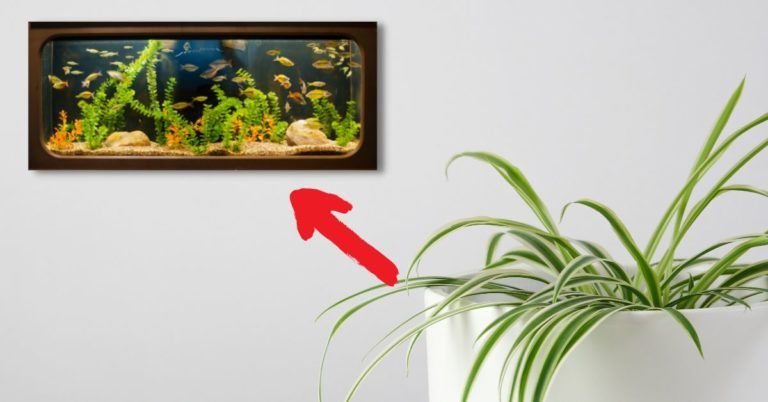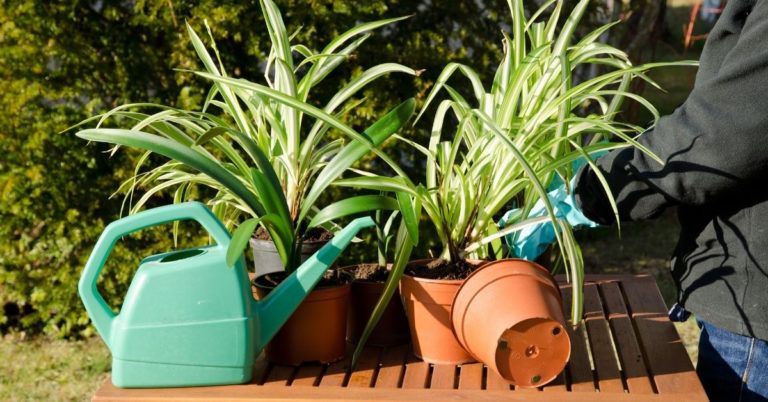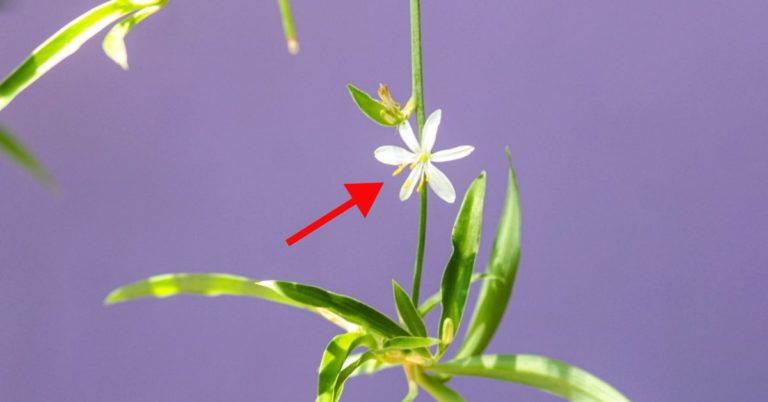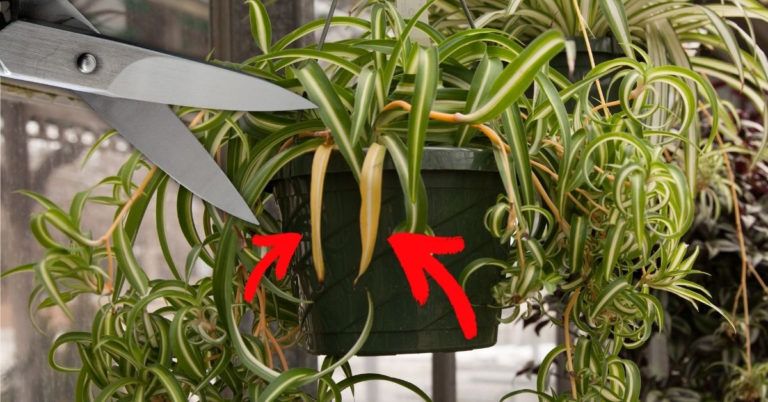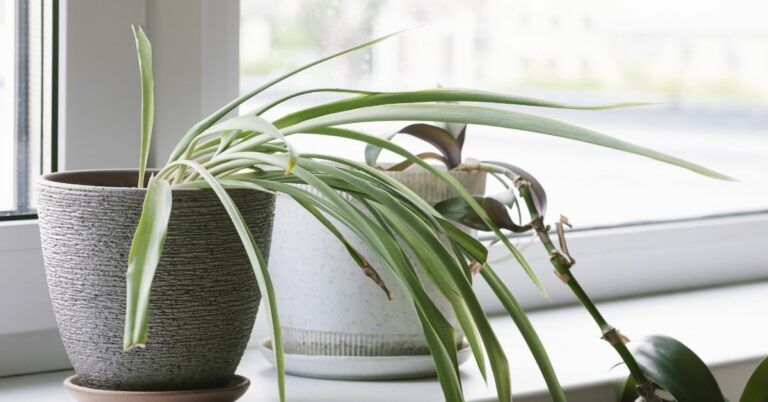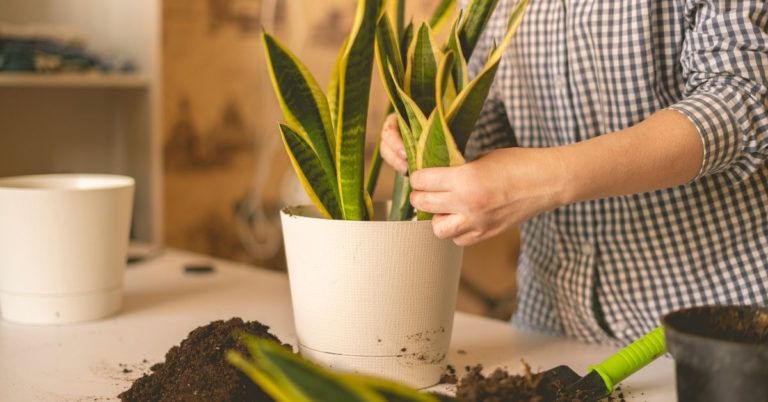Why is My Spider Plant Turning Brown? Find Out Why!
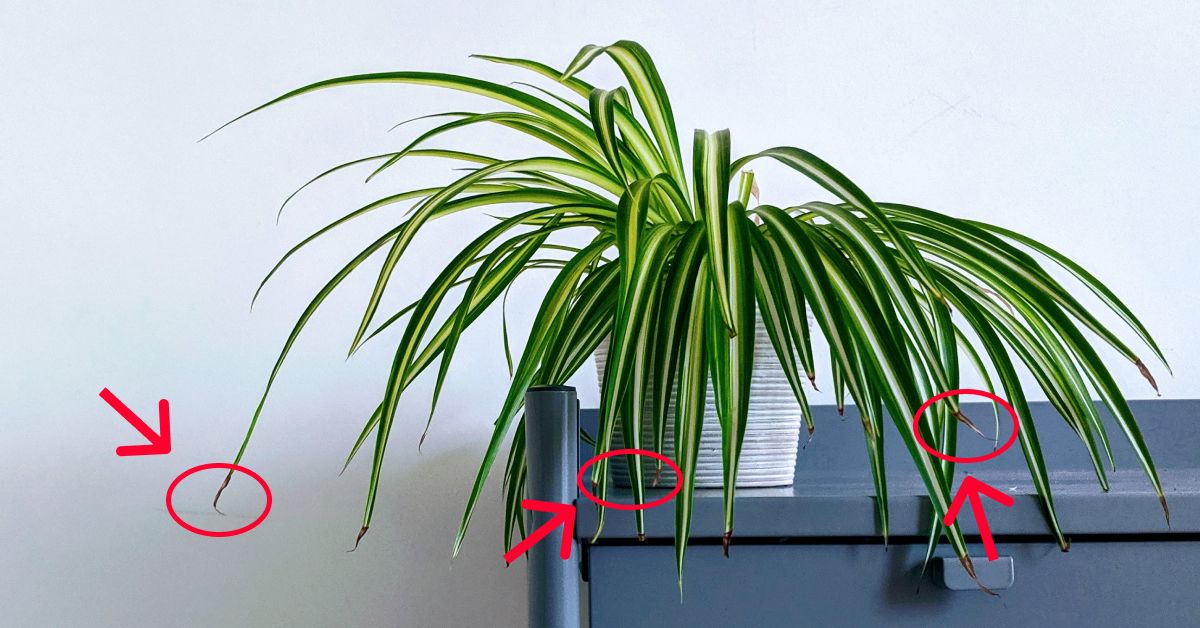
There are several reasons why a spider plant would turn brown. Some of the most common causes include water stress, too much sun exposure, low humidity, or over-fertilizing.
If you have a spider plant, then you know that they are easy to care for and can be very cute.
But what if you notice your spider plant is turning brown and dying off?
When your spider plant starts turning brown, you might be wondering what’s going on.
This article will explain why your spider plant is turning brown and how you can fix it.
What is a spider plant?
Spider plants are among the most versatile houseplants. They thrive in both cool and warm climates and are very easy to grow.
A beautiful flowering plant that does well in many conditions—on a windowsill, a ledge, or even hanging in a large vase.
The spider plant is also known for its great air-purifying qualities. It adds an element of beauty to any home, indoors or out.
The name “spider” comes from its long, thin leaves that resemble those of a spider.
Spider plants are very popular because they’re easy to care for and have an attractive appearance.
They don’t require lots of maintenance, but they’ll still look healthy when you water them occasionally.
Read our spider plant care guide to learn how to take care of your spider plant!
Why are spider plant leaves turning brown?
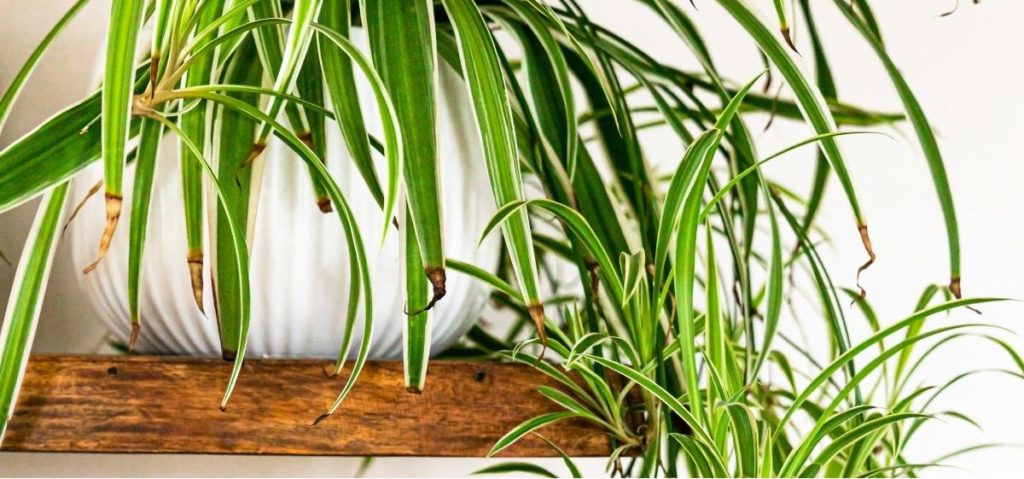
There are several reasons why your spider plant might start turning brown.
If you notice your spider plant turning brown, it’s essential to know the cause of the problem before you do anything else.
Let’s take a look at some of the most common reasons your spider plant may be turning brown.
Water Stress (Overwatering or Underwatering)
The phrase “water stress” refers to any water-related issues that plants may experience. Both too much and too little waterfall under this category.
When your spider plant is experiencing water stress, it will begin to turn brown.
Check your watering schedule and make sure that you’re watering your plants regularly.
Here’s a tip for you:
If you notice that your spider plant has brown, large streaks on the leaves, you are overwatering it. If the brown part only appears on the tips of the leaves, then you are underwatering it.
Although spider plants are relatively easy to care for, they can be sensitive to water.
A good rule of thumb is to make sure your soil is wet but not drenched with water. And during the colder months, you can give your spider plant less water than usual.
Also read: How Often Should I Water My Spider Plant?
Your tap water’s mineral content
Most of the time, your tap water has a very low level of fluoride.
However, if your tap water contains a lot of fluorides, it may cause your spider plant to turn brown.
The fluoride content in your tap water has some effects on your plant’s photosynthesis.
Fluoride is a chemical compound naturally found in the earth’s crust and is present in all types of water.
Unfortunately, there are some areas where fluoride levels are higher than others.
Check your tap water and make sure that it doesn’t contain too much fluoride.
If you suspect that your tap water is causing your spider plant to turn brown, you can buy a water filter that will remove the fluoride from your water.
If you don’t have access to a water filter, try using rainwater or distilled water to water your plants.
Overfertilizing
Overfertilizing can be a common problem for many indoor houseplants. It can also be a major cause of browning on the leaves of your spider plant.
Overfertilizing can lead to salt buildup in your spider plant’s soil. This can cause your plant to develop brown spots on the leaves.
If you notice that your spider plant is turning brown, it’s time to stop fertilizing it.
You might want to move your spider plant to fresh soil to restore its balance and prevent salt from building up again.
Unquestionably, this is an important step you should take when you notice that your spider plant is browning.
The next time you want to feed your spider plant with fertilizer, always remember to dilute the fertilizer with water.
Also read: Do Spider Plants Flower? (Answered)
Sun Exposure
Exposure to direct sunlight is another common cause of browning on the leaves of your spider plant.
Your spider plant can also turn brown if it’s exposed to too much direct sunlight.
If you place your spider plant in direct sunlight, it may begin to turn brown and wilt.
This is because the heat from direct sunlight might dry out the soil, which can cause the plant to lose its access to water.
So, you want to make sure that your spider plant is not exposed to direct sunlight.
Check the location of your spider plant in your house or apartment. If you live in an area where there is intense sun, try to keep your spider plant out of the direct sunlight.
Also read: Can A Spider Plant Live Outside?
Low Humidity
Humidity is one of the most important things that you should pay attention to when it comes to indoor plants.
If you notice that your spider plant is turning brown, it’s time to increase the humidity in your home.
Low humidity can be caused by air conditioning units and heating systems.
Your spider plant may withstand the hot, dry air of centrally heated rooms, but the leaf tips may turn brown as a result.
In order to prevent this from happening, you need to increase the humidity level in your room.
Mist your spider plant leaves on a regular basis, or place a humidifier near your plant to increase the humidity.
Further reading: Do Spider Plants Need Humidity?
Should I cut the brown tips off my spider plant?

Yes, it is totally okay to cut the brown tips off your spider plant. When spider plants turn brown, it is crucial to remove the brown leaves that have formed on top of their main leaves in order to promote healthy growth.
Consequently, you will be able to get rid of the brown tips on your spider plant and give it a new look.
But, if you don’t do it right, you might end up harming the plant.
If your spider plant is showing signs of brown tips, it’s best to remove 20% of the affected leaves at a time. This will avoid shock and help prevent further loss of water content.
What do I do if my spider plant has brown tips?
First of all, don’t panic. Then, make sure that you remove the brown tips carefully.
You can use a pair of scissors or a knife to remove the brown tips.
Next, you want to check what causes the brown tips on your spider plant.
It could be due to lack of water, sunlight, or overfertilization.
Afterwards, you need to take action.
Here’s what you should do based on the causes we have talked about above:
- You can move your spider plant to a shady location if you notice that the brown tips are caused by too much sun exposure.
- If the brown tips are caused by low humidity, you can place a humidifier near your plant.
- If the brown tips are caused by overfertilization, you should dilute the fertilizer with water and apply it regularly.
- If the brown leaves are caused by water stress, check your water schedule.
How do you revive a dying spider plant?
The spider plant is a type of succulent that can be easily grown indoors or outdoors.
However, if you notice your plant turning brown, yellow, or black, it’s probably dying.
If this happens to your spider plant, it means the roots are not receiving enough water and nutrients.
To revive your dying plant before it’s too late, you should let the soil dry out for a few hours, then replace the depleted soil with fresh soil that has been watered well beforehand.
You’ll want to make sure the soil stays moist but not soggy by misting or spraying water on them daily until they turn color again.
Also, make sure you place your dying spider plant in a bright area of your home and away from direct sunlight.
Also read: Can Spider Plants Survive a Freeze? (Answered)
Can the brown leaves on my spider plant turn green again?
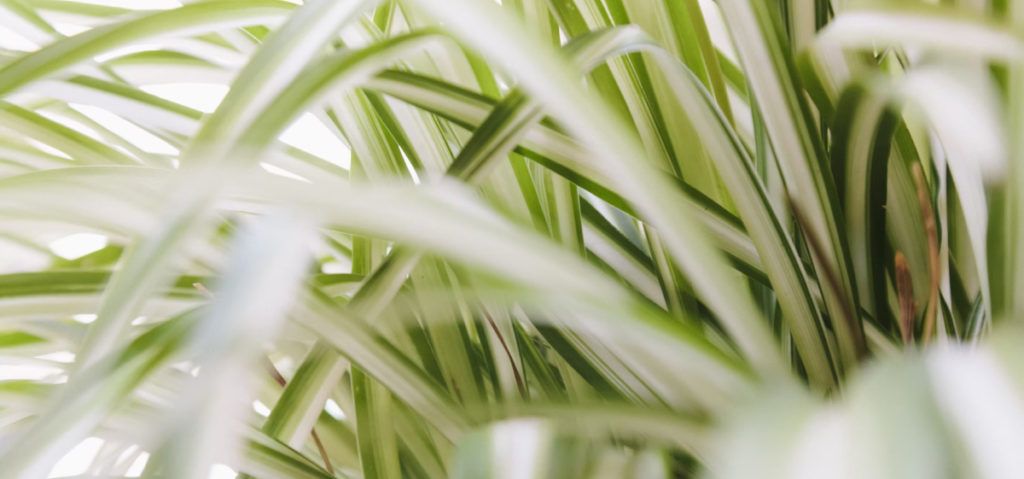
Leaves on a spider plant turn brown because the plant is under stress.
These leaves will eventually die and won’t come back green again.
However, you can trim or remove the brown edges of these leaves to get the plant back to looking healthy again.
If the leaves start turning brown, it’s usually because of a lack of nutrients or mild stress.
But in some rare cases, if a condition such as insufficient nutrition or moderate stress is treated immediately, a discolored leaf may recover its green color.
You should avoid getting your hopes up too much, though, as it only happens rarely.
Also read: Are There Solid Green Spider Plants? (Answered)
What does an over-watered spider plant look like?
Spider plants turn brown when they’re over-watered.
This is a symptom of overwatering, which usually happens indoors in cool conditions.
The solution to this problem is simple: make sure to water your spider plant less often during the colder months.
And remember not to drench the soil with water.
How often should you water a spider plant?
As a general rule of thumb, you want to water your spider plant regularly whenever you feel the soil is dry.
You can check the soil by digging your finger or skewer into it and feeling if it’s dry or moist.
Make sure you just water to moisten the soil, not to drench the soil in water.
Also, make sure you water your plants less often during the warmer months. This will help prevent brown tips from appearing on your plant.
Final Words
A spider plant can be an excellent houseplant for beginners. However, it’s important to know what causes the plants to turn brown and how to remedy the problem.
There are many things you can do to keep your spider plant looking beautiful and healthy.
But if the plant starts to turn brown or yellow, you need to take action quickly.
I hope this post answers your question about “why is my spider plant turning brown?”.
We hope you enjoyed our guide to spider plants and their care.
If you have any questions or comments, leave them below.
We would also love to hear about your experience with spider plants. Please share your thoughts and experiences with us in the comment section below.
You can also read our beginner houseplant care guide to help you learn more about taking care of your houseplants, even if you are new.
